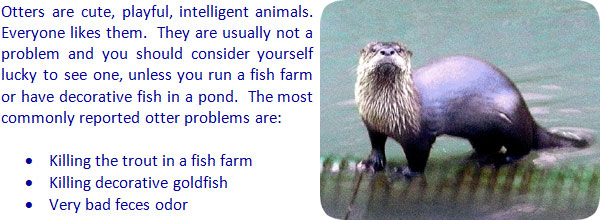If you are a pond owner, you may have encountered the issue of otters damaging your property or disrupting the ecosystem. Otters are curious and intelligent creatures that can wreak havoc on ponds by eating fish, digging up plants, and creating underwater tunnels. In such cases, trapping otters may be necessary to protect your pond and its inhabitants. In this guide, we will discuss how to effectively trap otters in ponds.
Understanding Otters
Before attempting to trap otters, it is essential to understand their behavior and habits. Otters are semi-aquatic mammals that are excellent swimmers and divers. They are primarily carnivorous and feed on fish, crustaceans, and other aquatic creatures. Otters are known to be territorial, and they mark their territory with scent glands.
Legal Considerations
Before setting traps for otters, it is crucial to check the local regulations and laws regarding trapping wildlife. In many regions, otters are protected species, and trapping them may require a permit or license. Make sure to comply with all legal requirements before proceeding with trapping activities.
Choosing the Right Trap
There are various types of traps available for catching otters, including cage traps and foothold traps. Cage traps are humane options that capture otters alive, allowing for their safe relocation. Foothold traps, on the other hand, restrain otters by the leg and are typically used by experienced trappers.
Best Trapping Locations
Identifying the best trapping locations in your pond is crucial for a successful trapping operation. Look for signs of otter activity, such as footprints, droppings, and fish remains. Otters usually frequent areas with easy access to water and abundant food sources.
Baiting The Trap
Using the right bait is essential for attracting otters to the trap. Fish, crayfish, and other aquatic creatures are effective baits for otters. Place the bait inside the trap, ensuring that it is securely fastened to prevent the otter from escaping with the bait.
Setting The Trap
When setting the trap, make sure it is securely anchored to prevent the otter from dragging it into the water. Position the trap in a location where otters are likely to pass by, such as near their feeding or resting areas. Check the trap regularly to ensure that captured otters are promptly dealt with.
Handling Captured Otters
Once you have successfully trapped an otter, it is crucial to handle it with care and respect. Avoid touching the otter directly, as they can become aggressive when threatened. Contact a local wildlife authority or animal control agency for assistance in relocating the otter safely.
Preventing Future Otter Incursions
To prevent otters from returning to your pond, consider implementing deterrents such as fencing, motion-activated devices, or noise makers. Removing potential food sources, such as fish or crayfish, can also discourage otters from frequenting your pond.

Credit: m.youtube.com

Credit: www.wildlifeanimalcontrol.com
Conclusion
Trapping otters in ponds can be a challenging but necessary task to protect your pond and its inhabitants. By understanding otter behavior, choosing the right trap, and following legal guidelines, you can effectively manage otter populations and mitigate potential damage to your pond ecosystem. Remember to handle captured otters responsibly and take steps to prevent future otter incursions to maintain a harmonious balance in your pond environment.

